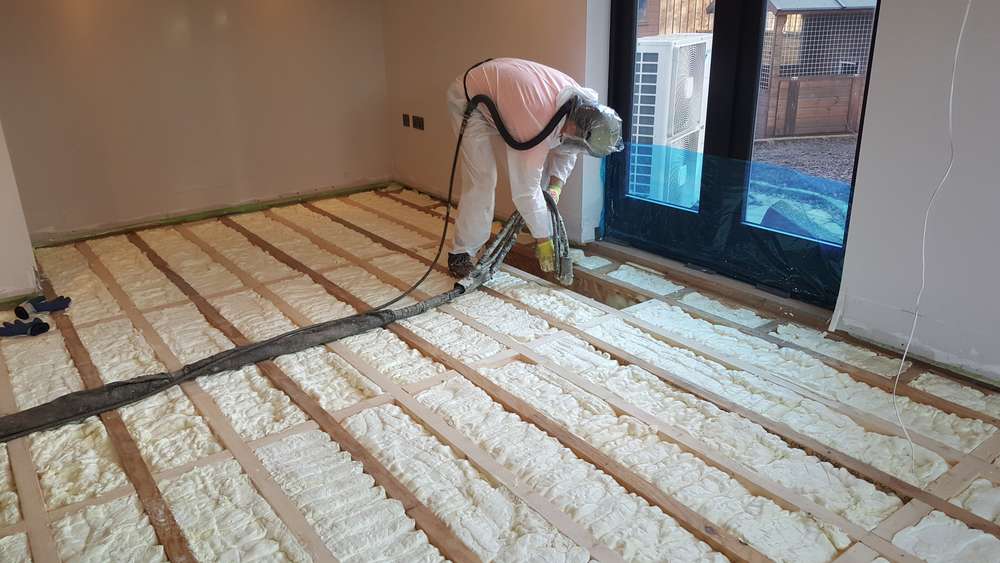Attic Spray Foam Insulation Slane
3 Bed Semi Attic Insulation Slane

Attic Insulation Slane
Spray foam works in many different conditions. Spray foam is beneficial for roofs, windows or exterior walls.
Spray foam insulation is not only warm and comfortable in winter but also cools your home in summer. Spray foam insulation allows the house to breathe because it allows moisture-laden atmosphere to escape through its “Cell” structure.
Benefits of Spray Foam Insulation for your home
Other uses include: commercial and industrial buildings; agricultural farms houses; sheds; shipping containers; vessels; and the refrigeration industry.
It also acts as an airtight shield around the house to keep out cold wind and rain. This is a major disadvantage over other insulation products currently on the market, as it allows heat to escape from your home.


Cost Price Of Spray Foam Insulation
Spray foam insulation has proven to be the most effective insulation material on the market today. It has a higher U value than other insulating materials such as rock wool, fiberglass and cellulose.
Spray foam insulation can also be used as a sound barrier. Spray foam insulation significantly reduces noise from outside. This is especially beneficial for companies or homes located in densely populated areas or near airports.
Insulate Your Slane Property Properly
It’s commonly used to block sound from traveling between rooms or floors. It’s especially effective on bathroom walls because noises from flushing toilets or showers can make it a nuisance.
It is simple to use and won’t cause any disruption to daily life.
An Irish traditional home can be insulation in one day.
The pipes are also protected and insulated to reduce noise.

Boards should be laid over the joists if the loft or attic is to be used for storage. You won’t get thick insulation if the insulation isn’t thick enough if the insulation is only applied between the joists.
It dramatically reduces sound transference when used within walls and attics, roofs, floors and roofs. This is in contrast to fibreglass and rock wool as well as polystyrene and polystyreneboards. The dense composition of the material and the application process result in a completely airtight enclosure. It keeps out sounds from the environment like traffic, pedestrianised streets and homes near airports.
Spray foam insulation also stops sounds from within a structure being transmitted to floors below, above, or into adjacent rooms. Spray foam insulation will dramatically reduce the sound levels of many noises within a structure, including talking, hair dryers (phones), office computers and printers as well as running showers, laundry machines, clothes dryers.
Spray foam insulation, which is flexible and packed with millions of tiny air bubbles, absorbs vibrations from the floor and wooden members. It also inhibits sound transfer through the floor. Spray foam insulation reduces the transmission and propagation of airborne noises by sealing every crack and crevice.
Spray foam insulation also dampens, if it is not eliminated completely, sounds that could originate from beneath a floor such water flowing through pipes. It completely surrounds the pipes, keeping them in place and preventing them from rattling. It also eliminates the sound caused by hot water flowing through pipes. The heating system heats wooded Joists, causing them to expand, creak and groove.
It also stops heat from escaping to the upper levels, which makes the lower floors cooler and requires more heat to keep them warm.
It is possible to insulate lofts if they are accessible and have no damp or condensation issues.
An uninsulated home loses 25% of its heat through its roof. Insulating your roof, attic, and loft is a good way to reduce heat loss. It will also reduce your heating bill.
If it’s easy to access your loft and your joists are straight, you can use rolls mineral wool insulation. The insulation begins by placing the first layer between the joists. These are the horizontal beams that form the loft’s floor. A second layer is then laid at right angles to cover and seal the joists.
To ensure sufficient insulation, raise the floor height so that you can place enough mineral wool below the new floor. This can be done by installing timber battens along the joists or by purchasing purpose-built plastic leg that attach to the joists to support the new floor. To prevent condensation, make sure there is a vent between the insulation boards and the insulation.
It is important to not squash the mineral fiber when you put the boards on top. This can reduce its insulation.
Insulation stops heat loss from living spaces. By making your loft space cool, you can prevent damp or condensation from developing. Consider increasing ventilation if you’re installing loft insulation by yourself.
The insulation can be fitted between and over the roofing rafters, which are the flat timbers that support the roof. Either rigid insulation boards can be carefully cut to the required size or foam insulation can be sprayed between each rafter.
Some companies offer to fix a roof that is leaking or damaged by applying foam insulation directly to the roof. This will not solve the problem. This is not something that we recommend. It is important to ensure that your roof remains dry before installing insulation.
If you would like to use your loft’s roof space as a heating room, then you should take a different approach and make a separate room.
If you’re planning on using your loft as a living room, or it’s being used already, make sure all walls and ceilings that divide a heated and unheated space have insulation.
Your house must allow air to flow freely in order for it to stay fresh, dry, and healthy. A professional installer will ensure that your house does not have any obstructions or seals. Do not cover any grilles, vents, or airbricks if you do DIY insulation.
You can have blown insulation installed if your loft is difficult to access. A professional will use specialist equipment and blow the right insulation material into every space. They can use mineral wool fibres or treated cellulose or polyurethane.
Flat roof insulation can save you as much on heating costs than loft insulation. The size of your flat roof will affect the savings.
If your loft is easily accessible, doesn’t have damp problems, and has a flat roof, it could be insulate yourself. If there are damp issues or more complex insulation needs, a professional should be hired.
Your loft hatch could become colder due to the cooler air. Install an insulated loft hatch to prevent cold draughts.
Insulating your ground-floor is a great idea to keep your property warm and lower your energy bills.
Insulating your loft is a great way to cut down on heating costs and save energy. It also keeps the home warm in winter. Even if you already have insulation, it is crucial to have the best amount in order to make it effective.
Loft floor rolls: These are the most traditional option. They are rolled up along the loft’s ceiling. These are easier than insulated floor boards and require less tools and take less time to lay. They come in both loose and encapsulated (blankets) rolls. These can be used to create base and top layers. You can use stilts or boards to board them. This will create a raised platform that is suitable for storage.
These items and tips are not included in the article’s list. It is important to make sure that you have all the information you need before you start insulation your loft floor.
Although insulation is present in many homes, it might not be as effective as you would like. This could be due to insulation being compressed by storage boards placed over it or if it hasn’t been topped up in the long-term. Sometimes, loft floors can be as small as 25mm in depth for older properties.
Good news is that you don’t need to remove existing loft floor insulation. You can simply add one or two layers of insulation to the loft floor to achieve the recommended amount. The article will provide more details about how much you should be consuming.
The spacing of your loft floor’s joists will determine the width roll you choose. This is because insulation is rolled between these joints. We recommend you select one that’s close to the spacing of your joists. This minimizes the need to trim.
The insulation’s required thermal resistance. Another alternative is to measure the thickness of insulation if you only lay loft rolls. You can find more information in the section “How to calculate loft floor insulation thickness”
Areas We Service


Parkhill, Dublin
01 5255297

